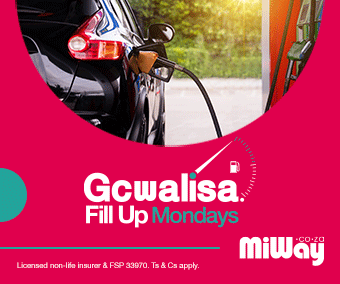South Africa is home to a rich diversity of wildlife, including a wide variety of snakes. While most snakes are not aggressive and prefer to avoid humans, encountering one on the road or near your vehicle during a stop can be unsettling. Knowing how to respond calmly and appropriately is essential for your safety and the wellbeing of the snake. This guide will equip you with actionable steps to manage roadside snake encounters effectively while emphasizing the ecological importance of snakes.
- What to Do If You See a Snake on the Road
- Stay Calm and Assess the Situation – Seeing a snake on the road can be startling, but it’s crucial to remain calm. Sudden movements or panic can increase the risk of harm to both you and the snake. Assess the distance between your vehicle and the snake. If it’s far enough to avoid interaction, continue driving cautiously.
- Avoid Running Over the Snake – Snakes play a vital role in the ecosystem by controlling rodent populations and maintaining ecological balance. Running over a snake not only harms the animal but can also damage your vehicle. Instead, slow down and steer around the snake if it is safe to do so.
- Wait for the Snake to Move – If the snake is stationary or crossing the road, give it time to move on its own. Most snakes will quickly make their way to safety if undisturbed. Keep your vehicle at a safe distance and avoid honking, as loud noises might confuse or agitate the snake.
- Do Not Attempt to Handle the Snake – Never try to move or handle a snake unless you are a trained professional. Many snake species in South Africa are venomous, and even non-venomous snakes can bite in self-defence. Contact local wildlife rescue services or a professional snake handler if assistance is required.
- Managing Snake Sightings Near Your Vehicle
- Safely Exit Your Vehicle – If you spot a snake near your parked vehicle, ensure all occupants remain inside while you assess the situation. Look for safe exit routes before opening the doors. If the snake is close, it’s better to wait for it to move away rather than risk a confrontation.
- Keep Your Distance – Maintain a distance of at least 5 meters from the snake. This distance minimizes the likelihood of provoking the snake while allowing it space to retreat. Use binoculars or your phone’s zoom function to observe the snake from afar if necessary.
- Call for Assistance – In situations where the snake doesn’t move away or poses a safety risk, contact a local snake handler or animal rescue organization. Avoid using sticks or objects to prod the snake, as this may provoke defensive behaviour.
- Keeping Children and Pets Safe
- Educate Children About Snakes – Children are naturally curious and may attempt to approach or touch a snake. Teach them to stay calm and alert you immediately if they see one. Reinforce the importance of keeping their distance and not throwing objects at the snake.
- Keep Pets Restrained – Dogs and cats often see snakes as threats or toys and may attempt to interact with them. If you’re traveling with pets, ensure they are secured on a leash or inside the vehicle. A curious pet can easily provoke a defensive snake, leading to potentially dangerous outcomes.
- Create a Safe Perimeter During Stops – When stopping for a break, choose clear areas with minimal vegetation. Inspect the surroundings for signs of wildlife before allowing children or pets to roam. Avoid parking near tall grass, bushes, or rocky outcrops where snakes may be hiding.
Snakes are often misunderstood and unfairly feared. However, they play an essential role in maintaining ecological balance:
- Rodent Population Control – Snakes help regulate rodent populations, which can otherwise become pests and spread diseases. By keeping these populations in check, snakes indirectly protect crops and stored food supplies.
- Biodiversity Maintenance – As both predators and prey, snakes are integral to the food chain. They support biodiversity by interacting with other wildlife species in their habitats.
- Indicator Species – Snakes are excellent indicators of environmental health. A thriving snake population often reflects a balanced and healthy ecosystem.
By appreciating the ecological value of snakes, we can shift our perspective from fear to respect and adopt practices that protect both humans and wildlife.
- Safely Relocating Snakes
If relocation is necessary, it’s best left to professionals. Here’s what you can do:
- Contact the Local Fire Department – Many Fire Departments have received accredited Snake Handling training to be able to deal with removing snakes.
- Contact the local Snake Handler – Before going on holiday, find the local snake handler of your chosen destination, and save their numbers in case of an emergency.
- Provide Accurate Information – Inform the handler about the snake’s location, behaviour, and appearance to help them prepare for safe relocation.
- Ensure a Safe Area – Keep bystanders, especially children and pets, at a safe distance until the handler arrives. However, keep an eye on the snake so that it doesn’t disappear before it can be captured and relocated.
Final Thoughts
Encountering a snake on the road or near your vehicle doesn’t have to be a dangerous or distressing experience. By staying calm, maintaining a safe distance, and seeking professional assistance when necessary, you can ensure your safety and that of the snake. Additionally, educating yourself and others about the ecological importance of snakes fosters coexistence and helps preserve these fascinating creatures.
Remember, snakes are a vital part of South Africa’s biodiversity. Respecting their role in the environment not only protects them but also contributes to a healthier ecosystem for all.
Also view:
Pedestrian Safety from Snakes and Snake Bites
What to do when you find a snake in your car: A Step-By-Step Guide
Snakebite Safety on Holiday: How to Stay Safe and Respond Effectively

























